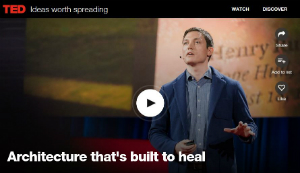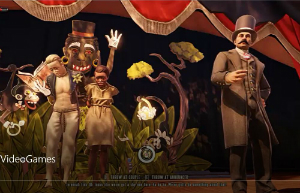This post indexes several student projects on race and diversity I’ll feature on this site, partly as examples to other students about what their peers have done…and what they could do, too. Of the first three below, two came from my English 315 – Advanced Writing class, and the third from a group of students wanting to make diversity an important issue in a first-year intro-to-college class required of all new students at North Central College.
What’s “advanced” about Advanced Writing is the audience students they aim for. They don’t write more “advanced” research papers because, by-and-large, only their college professors read them. How do you reach a broader audience? It’s not that you don’t do solid research, but that research is often embedded in stories, our own or someone else’s. Then there’s the medium, which—these days—seems to involve videos and podcasts more and more. It’s “writing” that teaches and entertains, entertains to teach, is designed to entertain and teach.
 “Design” brings us to the popular TED talks: “TED” = Technology, Education, Design. “If you want to know what I’m after,” I tell my students, “watch my favorite TED talk over and over and over again, absorbing its flow, its meaning and spirit.” It’s architect Michael Murphy’s “Architecture That’s Built to Heal.” He begins with a personal story—circling back to it at the end—about how working on a house helped heal his father. In between he teaches us about what he calls “Lo-Fab” architecture, something he developed while building hospitals that actually heal people instead of making them sicker. And the story has a profound arc. It begins with how architecture can heal our bodies, and ends, just before he returns to his father’s story, about how it can help heal our spirit—not just of an individual like his father, but of a whole nation like ours. Which brings us back to race. What, among many things, does our nation need to heal from—need to actively seek out healing for? Lynchings, for one. I have often said that Americans would rather talk about anything—anything—but race, and the tragic history of lynching, the horror and shame of this, is one thing that keeps us silent, or talking at each other, not with each other. One of Murphy’s architectural projects—a project done for Civil Rights lawyer Bryan Stevenson, whose story is told in the movie Just Mercy—intends to heal this deep wound. You can watch his TED talk over and over HERE, and enjoy student work on race and diversity at the links below.
“Design” brings us to the popular TED talks: “TED” = Technology, Education, Design. “If you want to know what I’m after,” I tell my students, “watch my favorite TED talk over and over and over again, absorbing its flow, its meaning and spirit.” It’s architect Michael Murphy’s “Architecture That’s Built to Heal.” He begins with a personal story—circling back to it at the end—about how working on a house helped heal his father. In between he teaches us about what he calls “Lo-Fab” architecture, something he developed while building hospitals that actually heal people instead of making them sicker. And the story has a profound arc. It begins with how architecture can heal our bodies, and ends, just before he returns to his father’s story, about how it can help heal our spirit—not just of an individual like his father, but of a whole nation like ours. Which brings us back to race. What, among many things, does our nation need to heal from—need to actively seek out healing for? Lynchings, for one. I have often said that Americans would rather talk about anything—anything—but race, and the tragic history of lynching, the horror and shame of this, is one thing that keeps us silent, or talking at each other, not with each other. One of Murphy’s architectural projects—a project done for Civil Rights lawyer Bryan Stevenson, whose story is told in the movie Just Mercy—intends to heal this deep wound. You can watch his TED talk over and over HERE, and enjoy student work on race and diversity at the links below.
Note: Some of the work below uses software students find and use on a trial basis, thus, for example, the water mark on Asma Al-Oldaina’s video below, which also features part of a TED talk.
- Pierce Mucha, “Race and Video Games“
- Asma Al-Oldaina, “Is ‘Race’ Real“
- Student group, “A Very Short Film About Diversity“
- Emily Marrazzo, “Race and the Theater” (an audio podcast)
- Zach Hird, “Race and Accounting”
- Janie Doutsos, “The ‘White Man’s Burden’ in Toons“
- Bea Rodriguez-Franzen, “Brown Man’s Burden…” (follow “Here” link in post to view this paper)
♦ Go to the Teaching Diversity main page.
